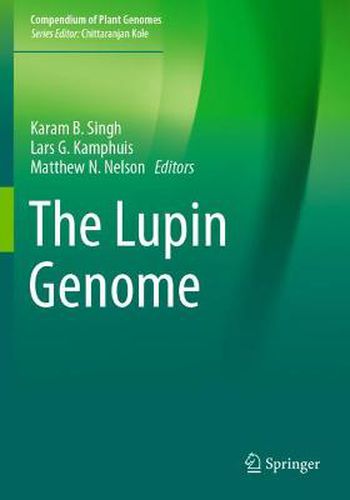Readings Newsletter
Become a Readings Member to make your shopping experience even easier.
Sign in or sign up for free!
You’re not far away from qualifying for FREE standard shipping within Australia
You’ve qualified for FREE standard shipping within Australia
The cart is loading…






This title is printed to order. This book may have been self-published. If so, we cannot guarantee the quality of the content. In the main most books will have gone through the editing process however some may not. We therefore suggest that you be aware of this before ordering this book. If in doubt check either the author or publisher’s details as we are unable to accept any returns unless they are faulty. Please contact us if you have any questions.
This book on lupin genomics primarily focuses on the narrow-leafed lupin (NLL), and details the genomic resources that have been developed and how they are currently being used to help advance both fundamental and applied research on NLL in areas ranging from its domestication to plant-microbe interactions and syntenic relationships between NLL and other legume crops. It also reports on genomic efforts being pursued with regard to other lupin crops.
Lupins are important ecological ‘engineers’: they can colonise and thrive in low-nutrient soils due to their ability to fix atmospheric nitrogen in symbiosis with bacteria and efficiently take up phosphorous. Recently, lupins have attracted considerable interest, not only because of their value for sustainable farming as a break crop, but also as a potential ‘super food’ for fighting major health issues in connection with diabetes and obesity.
Narrow-leafed lupin is the main grain legume crop, grown primarily in Australia, and was therefore selected for the development of a reference lupin genome and associated genomic resources. Its genome has recently been sequenced with a focus on the gene-rich space, which has advanced the development of new breeding tools for the improvement of NLL and related lupin crops.
$9.00 standard shipping within Australia
FREE standard shipping within Australia for orders over $100.00
Express & International shipping calculated at checkout
This title is printed to order. This book may have been self-published. If so, we cannot guarantee the quality of the content. In the main most books will have gone through the editing process however some may not. We therefore suggest that you be aware of this before ordering this book. If in doubt check either the author or publisher’s details as we are unable to accept any returns unless they are faulty. Please contact us if you have any questions.
This book on lupin genomics primarily focuses on the narrow-leafed lupin (NLL), and details the genomic resources that have been developed and how they are currently being used to help advance both fundamental and applied research on NLL in areas ranging from its domestication to plant-microbe interactions and syntenic relationships between NLL and other legume crops. It also reports on genomic efforts being pursued with regard to other lupin crops.
Lupins are important ecological ‘engineers’: they can colonise and thrive in low-nutrient soils due to their ability to fix atmospheric nitrogen in symbiosis with bacteria and efficiently take up phosphorous. Recently, lupins have attracted considerable interest, not only because of their value for sustainable farming as a break crop, but also as a potential ‘super food’ for fighting major health issues in connection with diabetes and obesity.
Narrow-leafed lupin is the main grain legume crop, grown primarily in Australia, and was therefore selected for the development of a reference lupin genome and associated genomic resources. Its genome has recently been sequenced with a focus on the gene-rich space, which has advanced the development of new breeding tools for the improvement of NLL and related lupin crops.